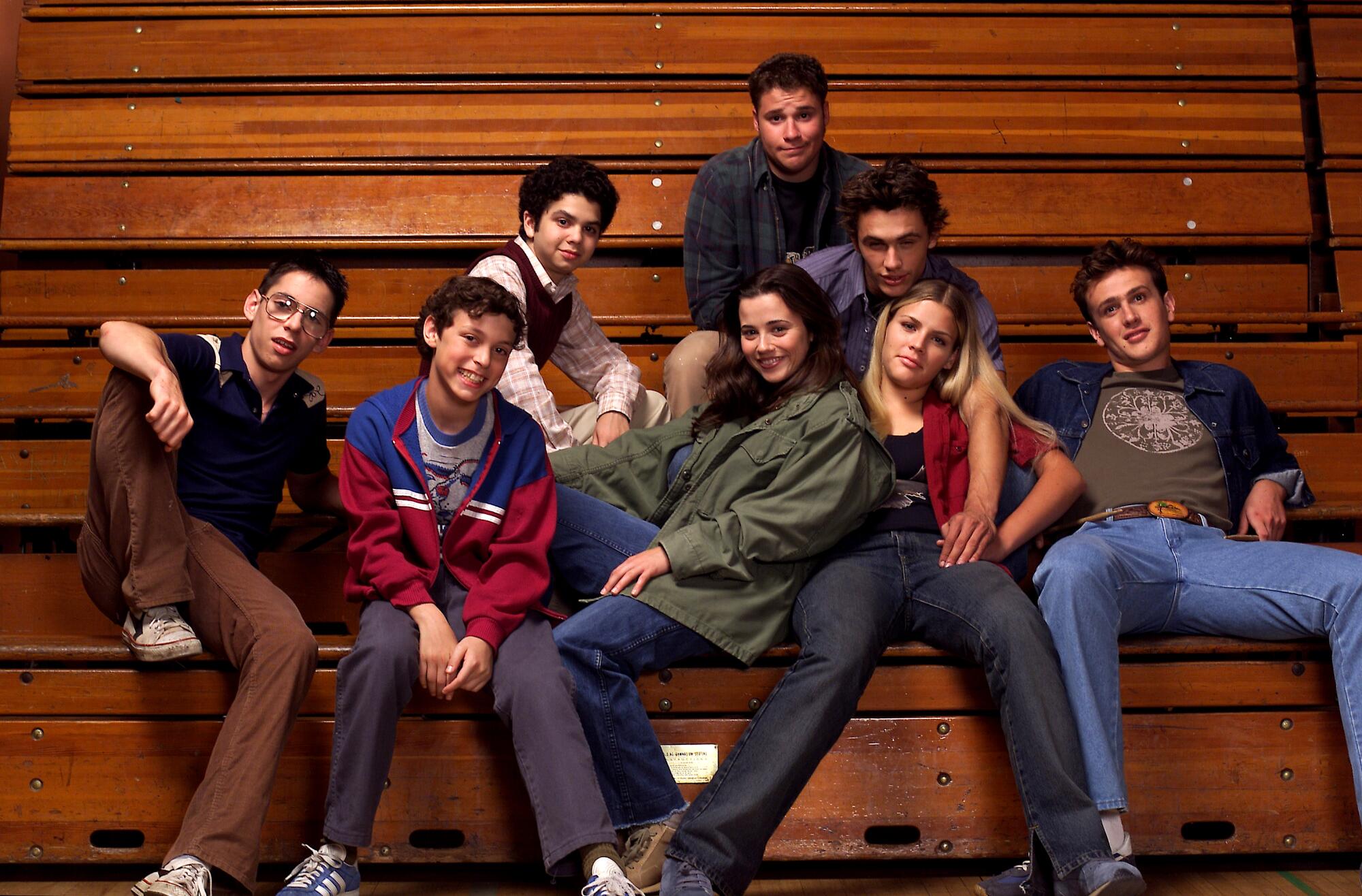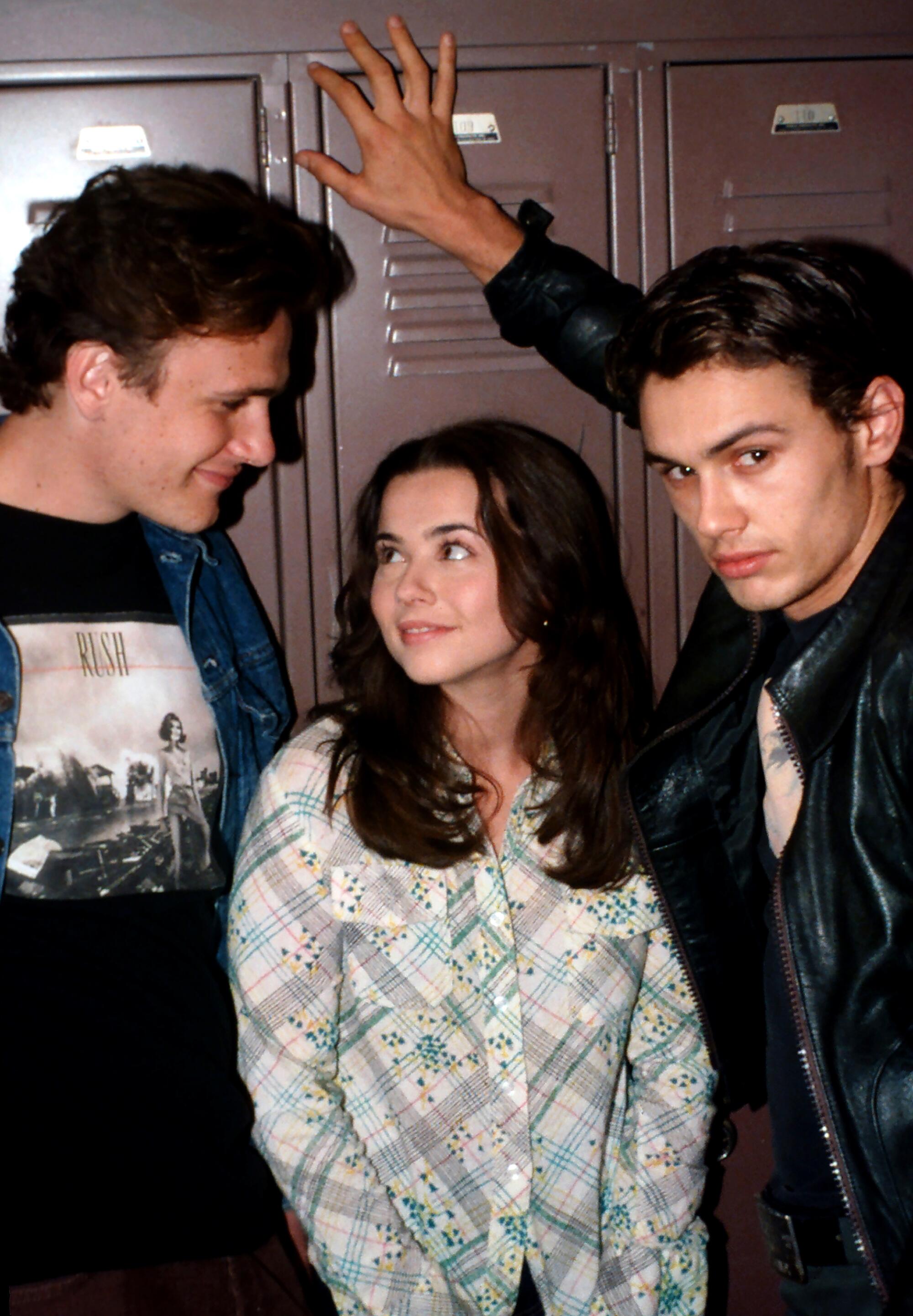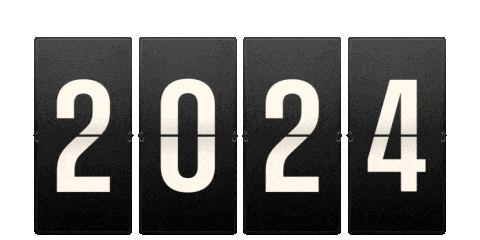Animation by Tomasz Czajka / For The Times; photographs by NBC and Clarence Williams / Los Angeles Times
- Share via
Twenty-five years ago, on Sept. 25, 1999, NBC debuted the high school comedy “Freaks and Geeks” as part of its new fall season.
Thus began a saga of independent vision, creative freedom and corporate mishandling that shaped the life and death of this short-lived but long-remembered — and still-discovered — television series. Created by Paul Feig and set in a Michigan suburb over the 1980-81 school year, it centered on high school junior Lindsay Weir (Linda Cardellini), 16, her-14-year-old brother, Sam (John Francis Daley), and their respective groups of friends — outsiders by temperament, choice or through no choice of their own.
Works of art can sometimes feel especially personal, like being in an actual relationship. “Freaks and Geeks” seems like part of my life, not just because I’ve regularly rewatched it over 25 years, but because I see myself and my friends in its characters — geeks more than freaks, though freaks, too.
The 1999 Project
All year we’ll be marking the 25th anniversary of pop culture milestones that remade the world as we knew it then and created the world we live in now. Welcome to The 1999 Project, from the Los Angeles Times.
I’ve also had the recurring opportunity to study it close up. I was covering television at another paper, the then-healthy L.A. Weekly, when the series debuted and I wrote a long historical cover story on the series as it teetered on the edge of oblivion, speaking at length with Feig, executive producer Judd Apatow and director Jake Kasdan, who had much to do with the series’ “uncosmetic” look and tone. It had already been canceled but was still in postproduction on its final episodes — some of the series’ best, but which NBC never aired. They would make it into the world eventually, through a combination of public screenings, what executive producer Apatow called “the unofficial distribution system” and at last on home video, including a special DVD set housed in a replica high school yearbook (in which my cover story, titled “Too Good and Too Weird” after Kasdan’s diagnosis of its failure, was reprinted.)
A dozen years later, when the series had achieved legendary status and its stars had become universally well known, Apatow, who was editing a comedy-themed issue of Vanity Fair, asked me to put together an oral history of the show, for which I spoke with every major cast member, some minor ones, writers, directors and executives and, once again, Apatow and Feig. Then, in 2015, I interviewed the pair on camera as bonus content for the series’ release on Blu-ray.
So it’s about time to dive back in.

Whether comedy or drama, most films or TV shows about teenagers fall into or combine elements of four categories: nostalgia, presenting older viewers with a rosy or comical picture of their own youth and giving younger viewers a glimpse of history, accurate or otherwise; aspirational, in which young viewers can see themselves as they wish to be and older viewers how they wish they’d been; sensational — glamorous soap operas selling sex and drugs (which some might regard as aspirational); and educational — issue-oriented, with or without a cautionary element.
There is none of that in “Freaks and Geeks.” Though set in the early ‘80s, because that’s when Feig grew up, it is not, beyond some sidelong cultural references, nostalgia — there’s not the slightest suggestion that these were “happy days,” and in any case the observation is so acute and the performances are so alive that the series feels contemporary whenever it’s watched. It certainly isn’t aspirational, given the soup of confusion in which its characters swim. There is no glamour, and no useful information, beyond knowing that your struggles are not yours alone.
“Freaks and Geeks” was something new, not necessarily realistic, but real — hilarious, melancholy, beautiful. The series begins with an existential crisis, as A-student Lindsay stops believing in God, quits studying and starts hanging out with the rootless “freaks”: sardonic Ken (Seth Rogen), brash Kim (Busy Philipps), deceptively fragile Daniel (James Franco) and sweet, stoned Nick (Jason Segel). It’s all to the concern of her parents (Joe Flaherty and Becky Ann Baker) and the confusion of her brother, who — with friends Bill (Martin Starr), awkward and thoughtful, and Neal (Samm Levine), a pseudo-sophisticate — is not quite done with childhood, yet hurtling into something new. But no one knows where they’re going.

Feig was an actor and comedian who wrote the pilot for the show in Midwest motel rooms while touring his self-financed film, “Life Sold Separately,” about four strangers waiting in a field for aliens to arrive. He gave it to Apatow, a friend from the comedy world who had a development deal with DreamWorks; Apatow had apprenticed with Garry Shandling on the groundbreaking “The Larry Sanders Show,” whose production Shandling once described as “almost a sacred process,” an exercise in “finding the moment, of feeling safe to be who you are.” (Of “Freaks and Geeks,” Apatow told me in 2010, “I would trick myself into thinking I was still writing for ‘The Larry Sanders Show,’ except it was happening in high school, and it would have the same level of truth and humor and drama.”) The script quickly became a pilot, which quickly became a series that was made with a minimum of interference, and what interference there was, Apatow ran interference on. That didn’t help its chance of survival, ultimately, but it was a ship that they were prepared to go down with.
The critical reaction was nothing short of ecstatic, and though there was an audience — several million on any night — it wasn’t big enough to satisfy NBC, which lobbied for the characters to “win” once in a while. “We were telling really unconventional stories where the victories were so small they could be confused with not actual victories,” Kasdan recalled in 2013. But notwithstanding from the show’s approach, its chances of developing a larger audience were undermined by the network changing its time slots and repeatedly pulling it from the schedule, for the World Series, November sweeps, the December holidays and February sweeps. It was on for two weeks, off for three, on for three, off for eight, on for five, off for four, on for two, and then — with the episode “Chokin’ and Tokin’,” in which Bill’s peanut allergy puts him in a coma and Lindsay gets paranoid trying pot — it was gone with the wind.

Given its brief existence, the life of the show has also been very much about the afterlife of the show. (It currently streams on Paramount+, Disney+, Hulu, Tubi and elsewhere.) “Everybody was so talented and nobody knew it yet,” said Cardellini, looking back in 2013 at a cast that has gone on to bigger, if not any better, things. Feig would go on to direct “Bridesmaids,” “Spy” and the gender-swapped “Ghostbusters,” produce television shows (including the lovely, late “Welcome to Flatch”) and direct many more. Apatow, who has characterized his subsequent career as “revenge” for the cancellation of “Freaks and Geeks,” has become Judd Apatow, the David O. Selznick of 21st century film comedy.
“Whenever I see an opportunity to use any of the people from ‘Freaks and Geeks,’ I do it,” he told me in 2013. “It’s a way of not acknowledging that the show was canceled. In my head, I can look at ‘Knocked Up’ as just an episode of Seth’s character getting a girl pregnant. All of the movies relate in my mind in that way, as the continuous adventures of those characters.” Even when the series was still in production, Apatow would counsel the young actors to create their own projects. Actual high school student Rogen got a head start while still on set: “I told them I was doing correspondence school from Canada and just wrote ‘Superbad’ all day.”
Given that the show went creatively from strength to strength, growing deeper and more delicate with each episode, a second season could not have failed to be great; there was certainly no way Feig and Apatow would have betrayed their characters, or the actors who played them, or that the actors would have been anything but marvelous in parts they already played to perfection. All the same, we have 18 episodes, telling dozens of stories, and a finale (shot early so there would be one) that, while it opens more doors than it closes, is lovely and moving and feels like a landing.
It’s a treasure trove, and like all such bounties, it makes one wish for more. Happily, it is endlessly rewatachable.
More to Read
The complete guide to home viewing
Get Screen Gab for everything about the TV shows and streaming movies everyone’s talking about.
You may occasionally receive promotional content from the Los Angeles Times.









